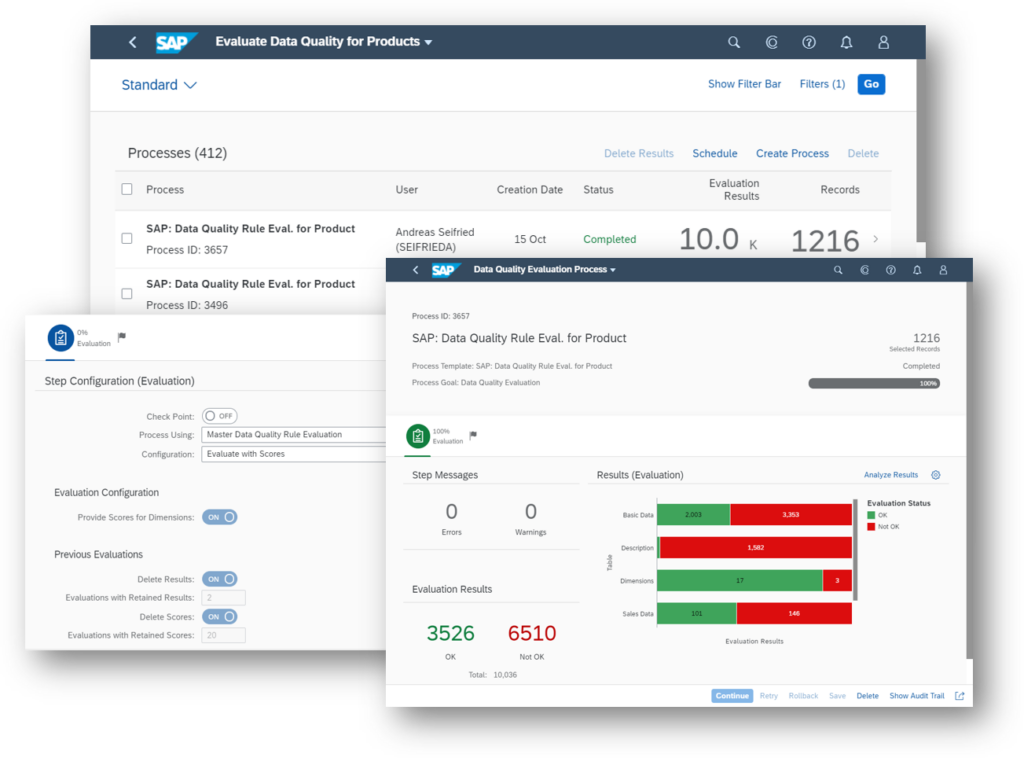With more data available today than ever before and the volume continuing to grow exponentially, enterprises are increasingly looking for reliable ways to manage, govern, and access their master data in real time. For many, SAP Master Data Governance (SAP MDG) has become a go-to solution for bringing order and control to their data management.
If you’ve been following our master data governance series, we’ve focused on best practices for getting your MDG implementation off the ground. Today, we’ll be covering best practices for the organizations that have an existing SAP MDG deployment and want to ensure they’re harnessing the full value of the solution for long-term success.
SAP MDG must be configured as your business evolves so that it can continue to verify data, protect data, and ensure that new or changed data still gets to the right people. As the business continues to grow and amass more data, users may find themselves needing to add regions, add another value to an existing attribute, or adjust a dynamic workflow to better meet the organization’s needs.
Without establishing visibility into the solution to easily manage workflows after deployment, users may find themselves resorting to the offline processes that they had used SAP MDG implementation services.
Setting the Foundation for Long-Term Success
Master data governance requires a long-term approach that becomes part of the organisation’s daily operations and culture. From the beginning, it is important to get everyone on the same page.
Data governance goes beyond compliance; it supports better decision-making, smoother processes, and reliable data across the company. Making this clear early helps create a solid foundation that can adapt as the business changes.
Another key element is providing users with tools that simplify managing MDG. When using an accelerator or enhancement, choose one that includes visual workflow management. A clear, user-friendly interface that shows workflows in real time helps business users and data stewards understand how the system works without needing deep technical skills. This reduces reliance on IT and prevents important information from getting lost in emails or documents.
With expert SAP MDG implementation services, organizations can tailor their master data processes to meet evolving business needs efficiently. Making governance accessible in this way encourages wider adoption and keeps knowledge visible to the whole team, which is essential for lasting success.
Learn More – MDG for Customers – All that you need to know
Bringing Data Quality into Focus with DQM
Establishing a robust governance framework is only the beginning. The next critical step is ensuring that the data circulating within your systems is accurate, consistent, and reliable. This is where Data Quality Management, or DQM, becomes a crucial part of the equation.
DQM is a comprehensive capability embedded in SAP MDG implementation services that empowers organizations to define, monitor, and enhance the quality of their master data. By setting clear validation rules and key performance indicators (KPIs), DQM facilitates the continuous assessment of data quality across various domains, including products and business partners.
By integrating DQM into your data governance strategy, you not only uphold high data quality standards but also foster a culture of continuous improvement and accountability. This integration is vital for making informed decisions, ensuring compliance, and driving operational excellence.
Four Pillars of Data Quality in SAP DQM
To build a strong foundation for master data, SAP DQM focuses on four key areas that help organisations manage data quality in a structured and consistent way. SAP MDG implementation services provide the expertise needed to integrate data quality management into your existing SAP ecosystem effectively.
Define Quality
It all starts with clarity. Defining what “quality” means for your organisation is the first and most important step. This is where you outline your data quality expectations and translate them into specific rules. These rules set the standard for how your data should look and behave within the system.
Enter Quality
Once you’ve defined the rules, the next step is to make sure every new data entry follows them. SAP DQM checks data in real time as it is being added or updated. This prevents low-quality or inconsistent data from entering your system in the first place, saving a lot of clean-up work later on.
Monitor Quality
Even good data can go bad over time. That’s why regular monitoring is essential. This part of DQM keeps track of data quality across different areas and flags issues early. It helps ensure that your data stays reliable, not just at the point of entry but as it flows through your systems.
Improve Quality
Monitoring brings visibility, but improvement brings real change. This phase is about fixing what’s broken and refining your data processes. You might update old records, adjust your rules, or make changes to how data is collected. The idea is to keep raising the standard, so your data becomes more accurate and useful over time.
The Role of Data Quality Rules
Within the DQM framework, data quality rules serve as the core foundation for managing and validating master data. These rules define what qualifies as high-quality data for your organisation and help ensure that records meet those expectations consistently.
These rules can either be created manually by the organisation or suggested through rule mining, a functionality that analyses patterns in existing data to propose potential validation checks. Once defined, these rules are used to verify the integrity and completeness of master data during entry, processing, or maintenance.
To make the process more accessible, SAP MDG implementation services offered by a certified SAP partner use Business Rule Framework Plus (BRF+) to manage these rules. BRF+ is a low-code platform that allows business users to define and update data quality logic using a user-friendly interface. This approach makes DQM more collaborative and scalable, encouraging broader participation across departments.
An added advantage of this setup is flexibility. These rules can be imported and exported across systems, which supports reuse and consistency throughout your SAP environment.
What makes these rules even more powerful is how they fit into the wider SAP MDG solutions ecosystem. Data quality rules aren’t limited to standalone checks, they can also integrate with modules like Central Governance, Consolidation, and Mass Processing. For instance, a rule checking for the presence of a “Tax Indicator” on supplier records can be applied not only during quality evaluations but also while new data is being created or updated in governance processes.

SAP DQM Use Cases
High-quality data leads to better decision-making. With trusted data in place, teams can draw insights with more confidence and act with greater precision. DQM also supports compliance efforts, especially in industries where regulations demand strict data accuracy. By keeping data clean and governed, companies can reduce the risk of fines, reputational damage, and operational errors.
Then there is the operational efficiency angle. Poor data slows things down. Whether that is a wrong product spec, an outdated customer record, or missing supplier info. By identifying and correcting data issues early, DQM helps reduce manual rework, cuts unnecessary cost,s and keeps processes running smoother.
Investing in SAP MDG implementation services ensures that your data governance framework stays aligned with your business goals as you grow.
To give you a better idea, here are some real-world examples of how different industries are using DQM:
An e-commerce company uses DQM to validate and standardise product listings. That leads to better search results and cleaner catalogues, which directly impact conversion rates.
A bank leverages DQM to clean and enrich customer profiles, supporting their compliance with KYC regulations while also improving fraud detection.
Real Impact: How SAP MDG Optimized Process for a Global Manufacturer
A leading manufacturer in the agriculture and industrial space partnered with Stridely Solutions to modernize their master data processes using SAP MDG solutions. The organisation was facing major challenges due to fragmented data systems, duplicated entries, and a lack of governance structure. By using SAP MDG implementation services, they were able to centralise data management, clean up existing records, and automate key workflows. This reduced manual errors, eliminated redundancies, and improved the accuracy of information across materials, suppliers, and customer records.
The transformation led to noticeable gains. With better data quality, the company enhanced its decision-making and ensured regulatory compliance across operations in over 100 locations. Automated approvals, custom validation checks, and better visibility into data helped streamline processes and reduce operational costs. More importantly, this centralised and scalable setup now supports the company’s growth plans with a foundation of trusted, high-quality data.
Read Full Success Story – Link
Build a Strong Data Foundation for the Future with SAP MDG Implementation Services
As organisations grow and evolve, the need for trusted, high-quality data becomes non-negotiable. SAP MDG, together with strong Data Quality Management capabilities, offers more than just compliance. It lays the groundwork for better decisions, smoother operations, and long-term scalability. From defining what good data looks like to constantly improving its quality through smart rules and governance workflows, businesses can finally take control of their data story.
Whether you are just starting to explore master data governance or aiming to improve your existing processes, SAP MDG solutions can help create a clear path forward. Stridely can help you achieve that by providing expert guidance and tailored solutions to gain the full potential of your data. Contact us today!


